Former Astronaut Leads March for Science in Los Angeles in Electric Hummer
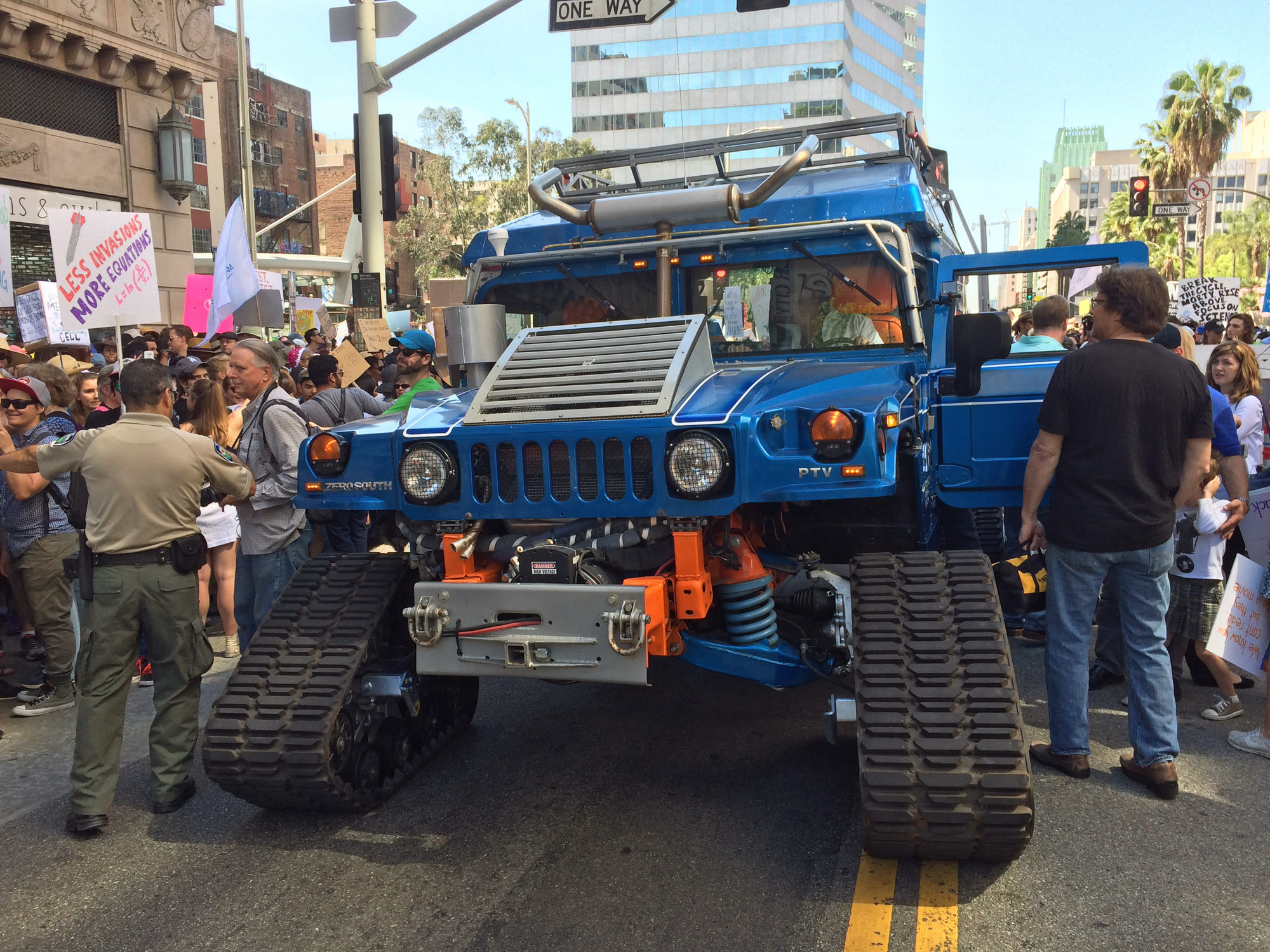
LOS ANGELES — Former NASA astronaut Garrett Reisman drove a battery-powered Hummer at the front of the March for Science satellite rally in Los Angeles yesterday (April 22), and discussed his concern for how well humans are taking care of spaceship Earth.
Driving the massive vehicle, Reisman was trailed by a stream of demonstrators holding signs announcing general support for scientific research, science funding and the use of scientific evidence when crafting political policy. The march organizers told Space.com that about 50,000 people registered to attend the march.
"I'm here because I'm a former astronaut, I'm a former scientist and I'm an engineer, but most importantly I'm a dad," Reisman told Space.com. "I really want to make sure that my 6-year-old son has fresh air, that he has clean water to drink and … that we leave him a legacy of a livable planet. And I want him to grow up and be able to see coral reefs and glaciers, and all the things I was fortunate enough to do in my lifetime. And I'm afraid that we're messing that up." [March for Science in Photos: The Best Space Signs]
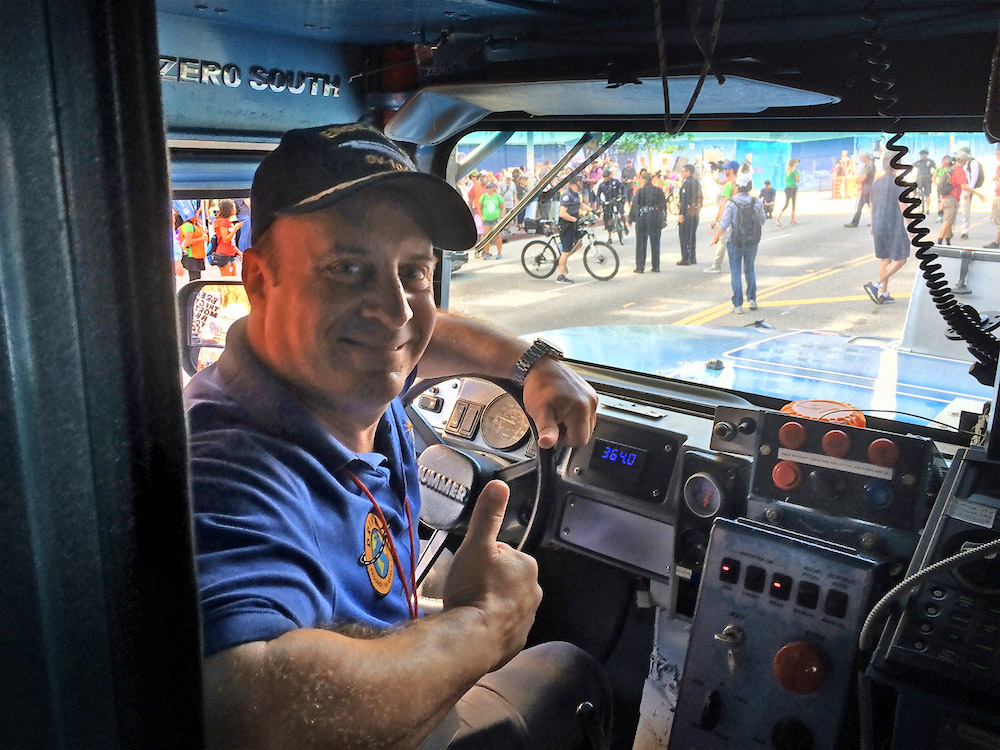
Climate change is one primary way that humans are currently altering the Earth. During the march, speakers discussed concerns about political leaders who deny that climate change is caused by humans (or deny that it is occurring at all) or are not taking sufficient steps to mitigate its effects. Many of the signs that supporters held during the rally also referenced concerns over climate change and climate change policies.
Reisman joined NASA in 1998 and made two trips to space, once aboard the space shuttle Endeavor and once aboard the space shuttle Atlantis. During his first trip in 2008, Reisman lived on the International Space Station for more than 3 months. (Reisman left NASA in 2011 to join the private spaceflight company SpaceX, but said he was attending the march as a private individual and not as a representative of the company.)
The main March for Science rally took place on the same day in Washington D.C. The Los Angeles event was one of over 400 satellite marches in the U.S. registered on the main March for Science website as of April 22. Over 200 satellite marches were registered in other countries. [More March for Science Photos from Live Science]
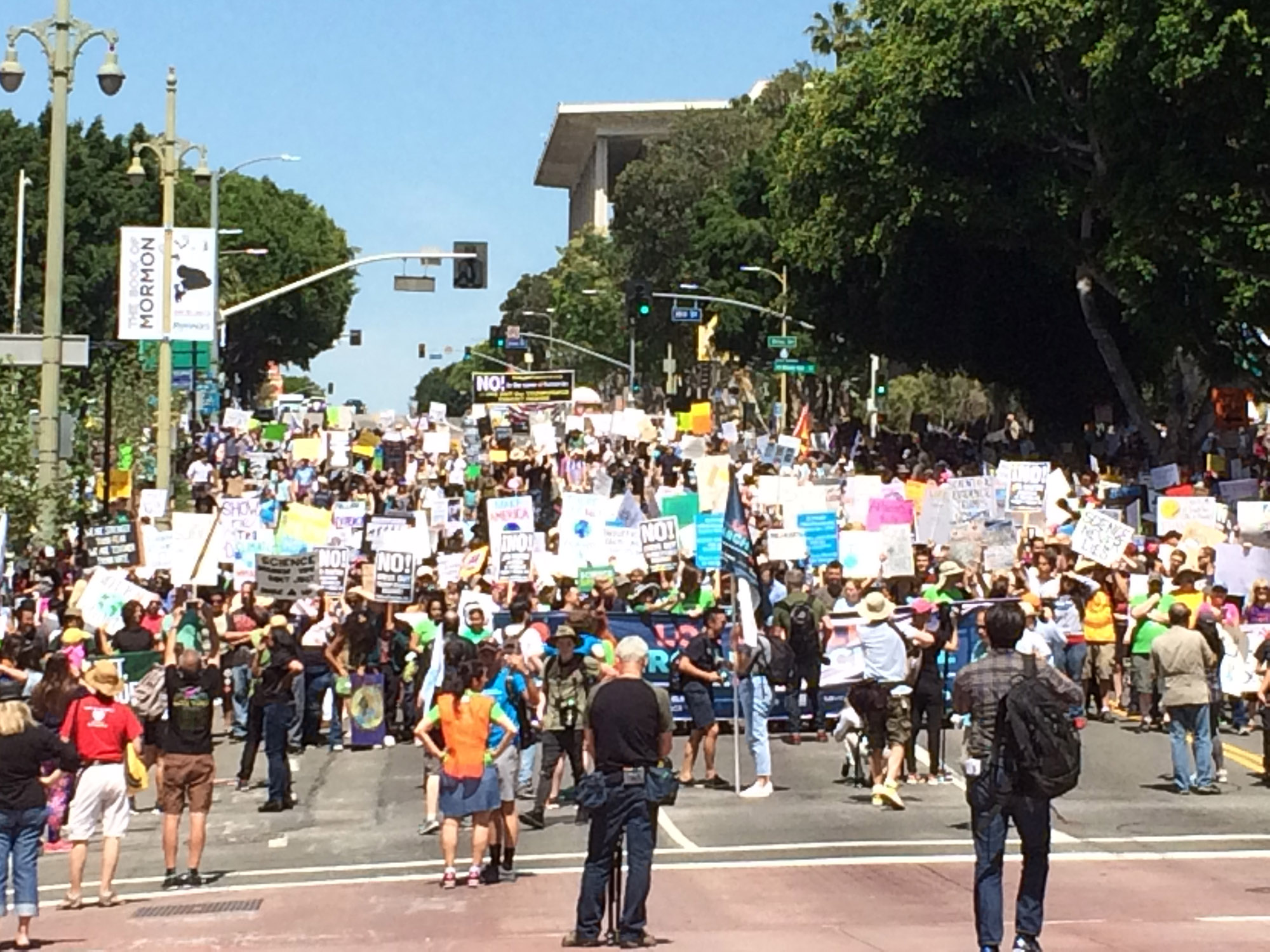
The Los Angeles March for Science began with a morning program of speakers at Pershing Square in the city's downtown neighborhood, followed by the march itself, which ended in front of City Hall a little less than 1 mile (1.6 kilometers) away.
Get the Space.com Newsletter
Breaking space news, the latest updates on rocket launches, skywatching events and more!
The Hummer that Reisman drove was converted into an electric vehicle for a project called Zero South, led by the production company Drive Around the World. The vehicles can run on 100 percent battery power and are intended for use by scientists doing research in Antarctica and other icy locales, a representative of the company told Space.com. The two vehicles leading the parade (nicknamed "Tuesday" and "Buddy,") were equipped with continuous tracks that would be used on snow or ice, rather than wheels.
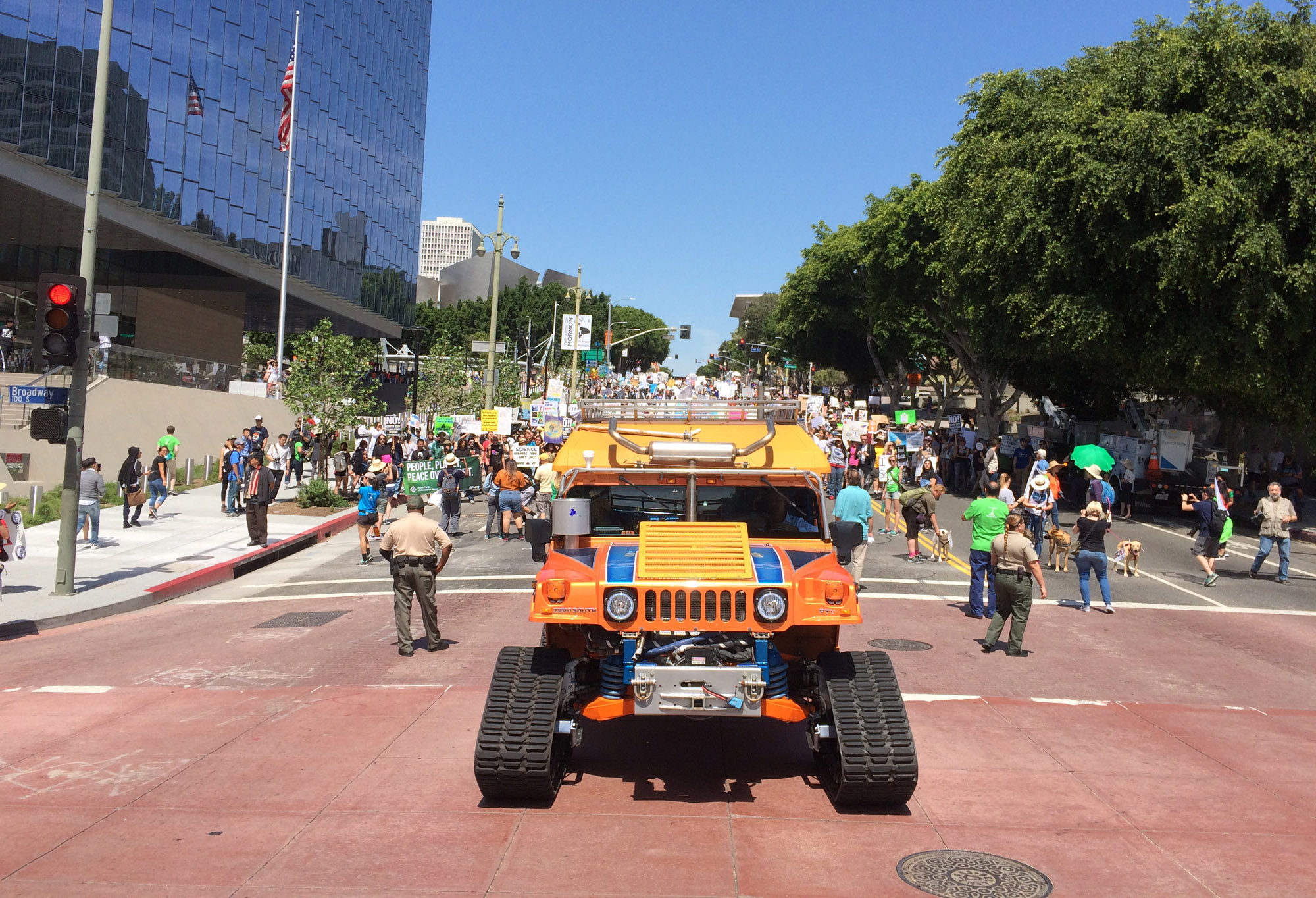
Reisman said he hopes the March for Science will raise awareness among elected officials that "there's a real thirst and a demand [from the public] that [political] decisions be based on evidence and logic and data, and not just based on fear and emotion. That we have to do the right thing. We have a responsibility to not just serve short term profits for our corporations, we have a responsibility to lead this country and lead this planet. And it’s a serious thing." [2017 March for Science: Live Updates]
The fragility of the Earth is something Reisman said he came to understand after visiting space.
"On my first mission, I looked out at the horizon and what I was really astounded by — what really left a much bigger impression on me than anything else I saw — was how thin the atmosphere was," he told Space.com. "When you look at that with your own eyes and you see this tiny, tiny, thin blue line which is all the air we have to breath — I mean it looks incredibly fragile. It looks like a gust of wind could come by and strip it away. It looks so incredibly tenuous. And it was terrifying [to see that]."
"We think of the planet as this big, enormous thing but it's really mostly a big, dead rock," he said. "The part that sustains us is really much smaller than we believe. And … when you see it with your own eyes, you understand that we can mess it up. It's certainly within our capacity to harm it badly. And in fact we have been doing that for a while, and we have to stop that. This is our spaceship. That’s our life support system. We're the crew, and we really, really, really need to take care of our spaceship. Because if we just trash it, we're all in a lot of trouble."
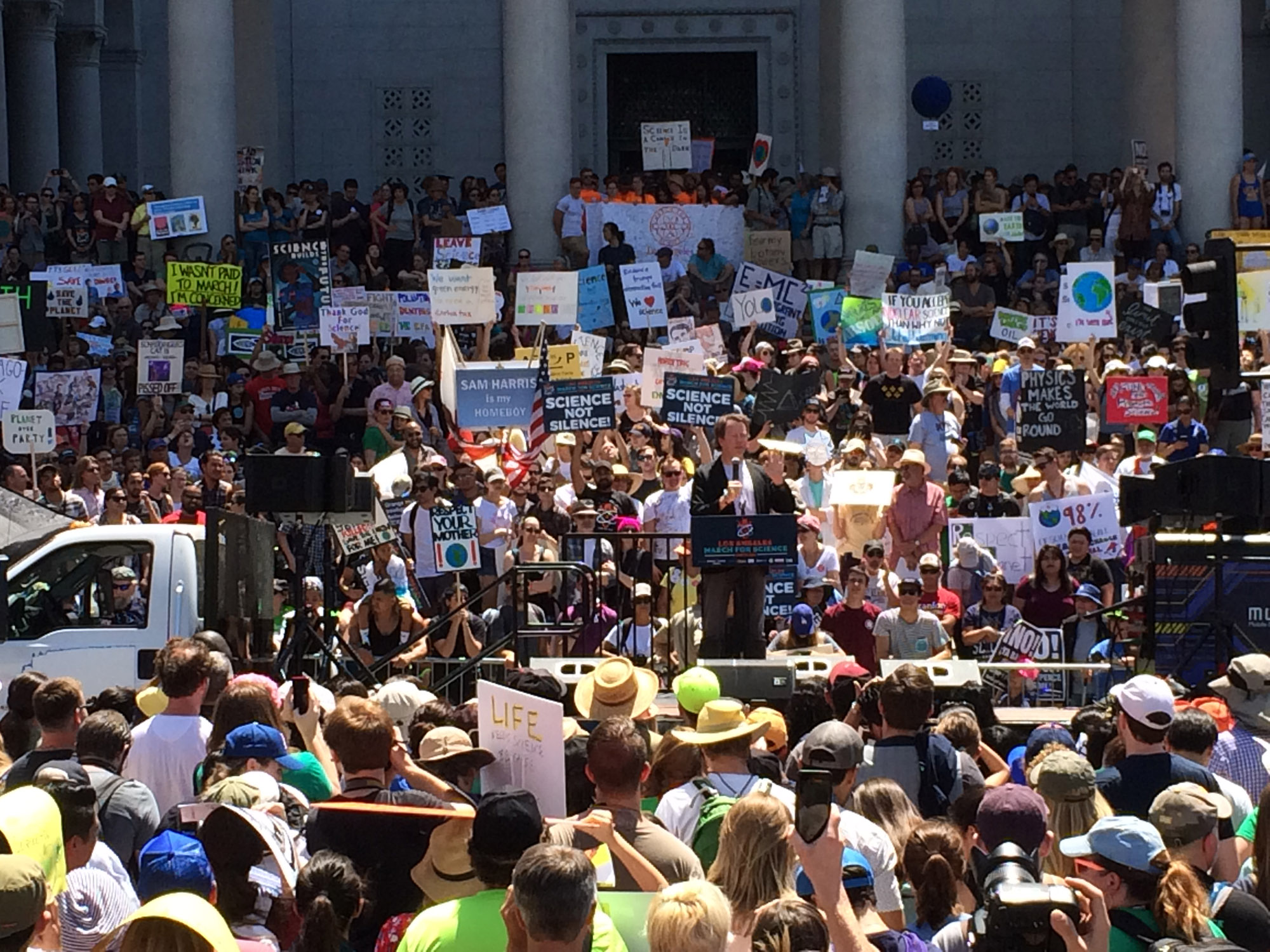
Reisman wasn't the only NASA representative at the march. Farisa Morales, an astrophysicist at NASA's Jet Propulsion Laboratory in Pasadena, California, spoke during the morning program about the way that science helps to fulfill the idea of the "American dream," both by providing people with the opportunity to pursue their passions, and by producing concrete spinoff technologies that improve people's lives.
"As the daughter of unprivileged Mexican immigrants, I never imagined I would get involved with exploration beyond our atmosphere," Morales said. "But here I am, pioneering discoveries of planets beyond our solar system."
Morales completed her science undergraduate degree while raising two young children and running a business with her husband. She accepted an internship at JPL and eventually earned her PhD in astrophysics.
"As an active astrophysicist, I am here to tell you that the sky is not the limit," she continued. "When something is important, we need to raise our hand [and] say, 'Yes, I am here! I want scientific research to continue. I want to learn truths about nature, and my environment, in a self-correcting scientific way, because that is the American way.' Let science be in service of humankind."
Follow Calla Cofield @callacofield.Follow us @Spacedotcom, Facebook and Google+. Original article on Space.com.
Join our Space Forums to keep talking space on the latest missions, night sky and more! And if you have a news tip, correction or comment, let us know at: community@space.com.

Calla Cofield joined Space.com's crew in October 2014. She enjoys writing about black holes, exploding stars, ripples in space-time, science in comic books, and all the mysteries of the cosmos. Prior to joining Space.com Calla worked as a freelance writer, with her work appearing in APS News, Symmetry magazine, Scientific American, Nature News, Physics World, and others. From 2010 to 2014 she was a producer for The Physics Central Podcast. Previously, Calla worked at the American Museum of Natural History in New York City (hands down the best office building ever) and SLAC National Accelerator Laboratory in California. Calla studied physics at the University of Massachusetts, Amherst and is originally from Sandy, Utah. In 2018, Calla left Space.com to join NASA's Jet Propulsion Laboratory media team where she oversees astronomy, physics, exoplanets and the Cold Atom Lab mission. She has been underground at three of the largest particle accelerators in the world and would really like to know what the heck dark matter is. Contact Calla via: E-Mail – Twitter









